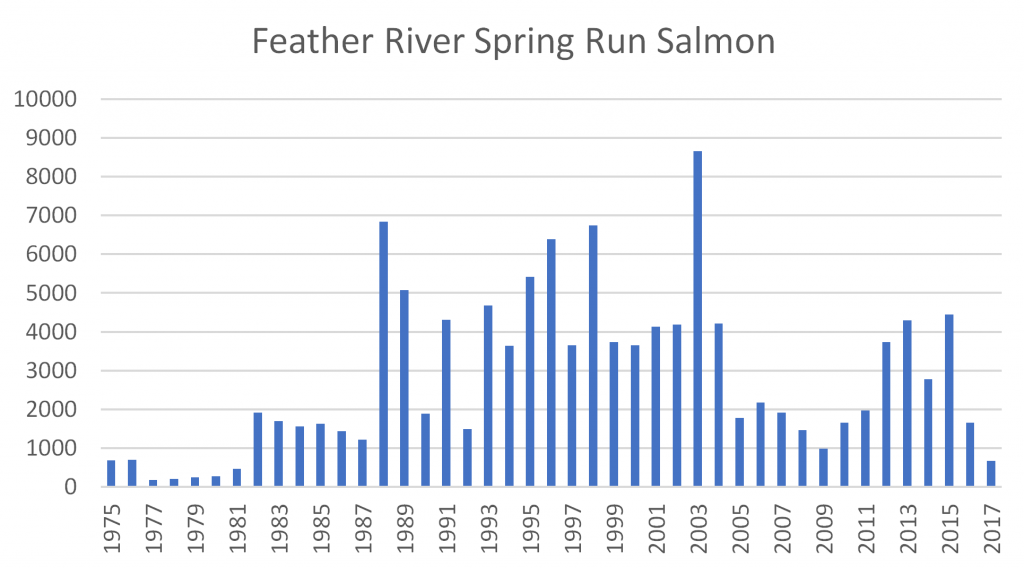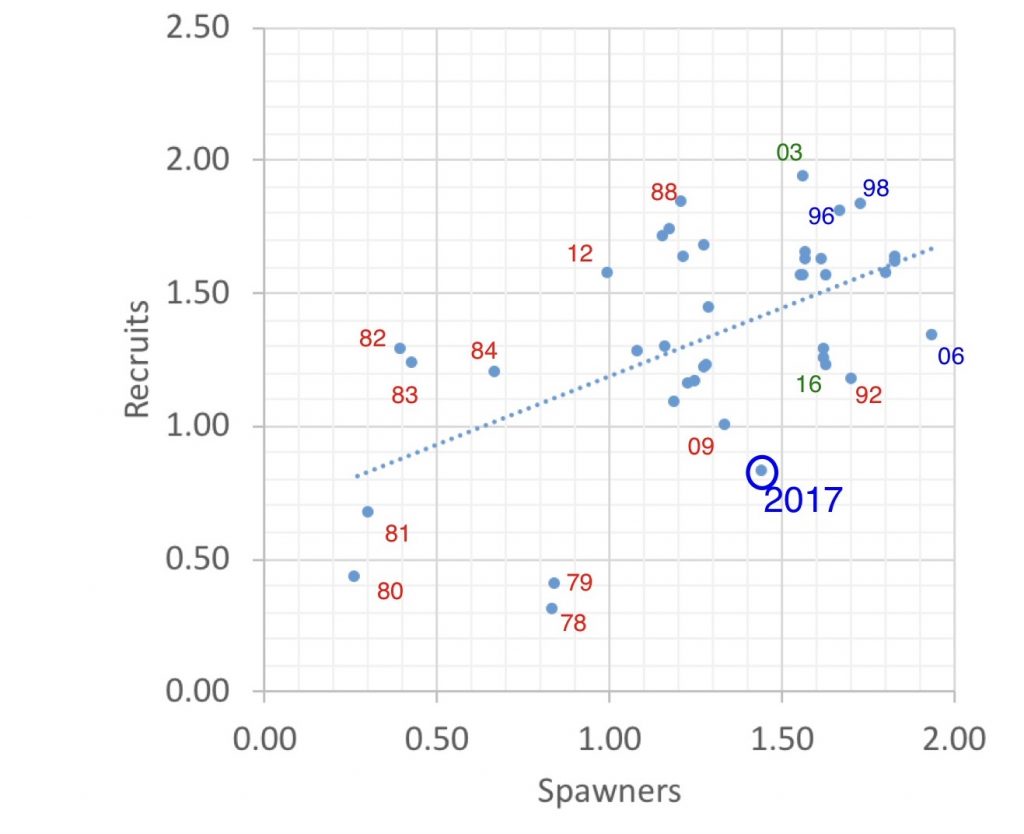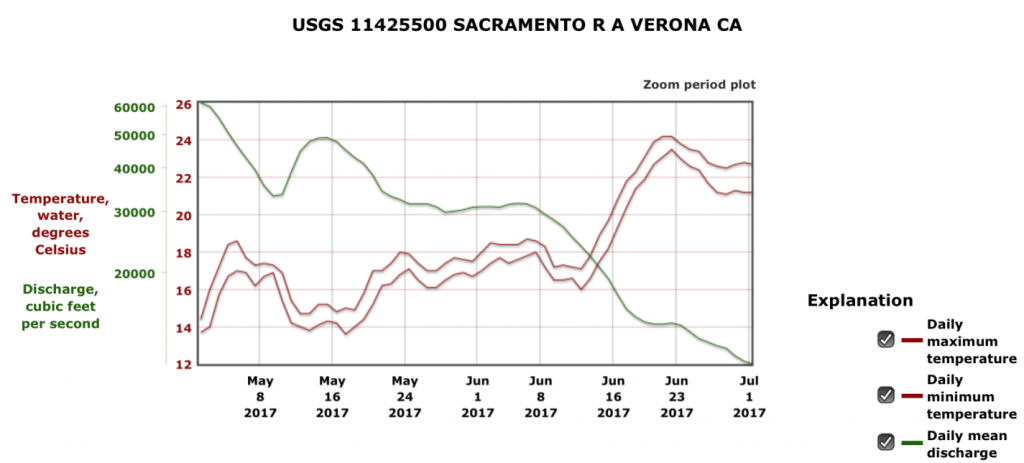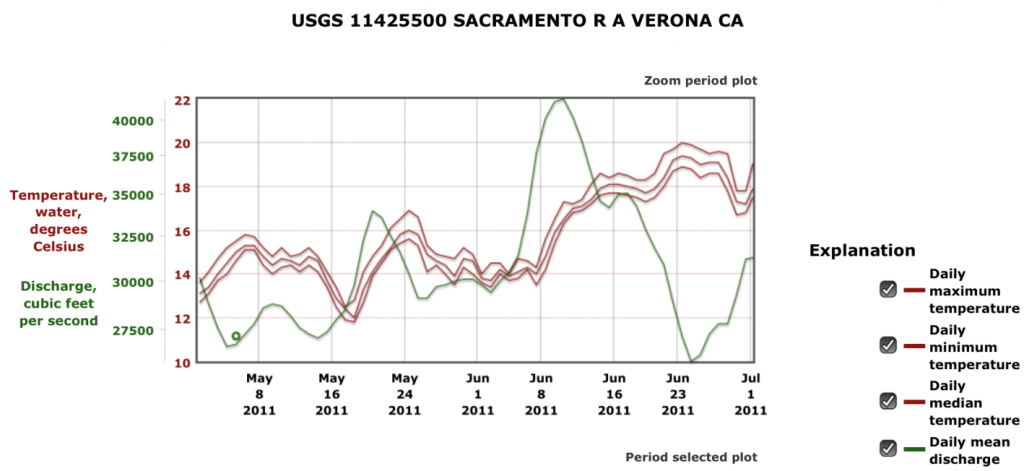Recent reports1 speak to record low salmon runs in the Sacramento River Valley, including spring-run Chinook in the Feather River. In May, I described the Feather spring-run population dynamics.2 The run is primarily a hatchery run that benefits from trucking to the Bay. The 2017 Feather spring-run stands out as poor in the long term patterns (Figures 1 and 2). A lot happened this past year in the Feather with many ramifications to the spring run. Poor flows and water temperatures in late spring likely contributed to the poor run compared to wet year 2011 (Figures 3 and 4). High water temperatures (>20oC; 68oF) in 2017 likely hindered the late spring component of the adult spring-run migration and subsequent over-summer survival. Poor conditions in drought years 2014 and 2015 during the winter-spring rearing season likely also contributed by reducing survival of hatchery smolts released in 2014 to the river (0.16%3) compared to those trucked to the Bay (0.24%).
So how might future runs be improved?
- Improve lower river flows and water temperatures when hatchery smolts are released into the river in April. Under wet conditions in 2010 and 2011, contributions from river smolt releases were 2 to 3 percent, 10 to 20 times the contribution in drier years.4
- If dry conditions cannot be avoided, then truck smolts to the Bay. In addition, barging smolts to the Golden Gate should be considered – barged fall run hatchery smolt contribution in drier year 2012 was 3.5% compared to 0.3% for the 1.2 million river-released smolts and 1.2% for 1 million trucked smolts. 5
- Maintain water temperature during the spring adult migration within the 20oC water quality standard. Often, Verona through lower Feather River water temperatures exceed 20oC in spring, putting adult spring-run at risk. Water temperatures should not be above 18oC (65oF).
Finally, given the poor conditions from 2015 to 2017, and thus expected poor runs in 2018-2020, every effort need be made in these coming years to turn around the downward trend if the Feather spring run is to remain viable. The run remains an essential component of the Central Valley ESA-listed spring-run Chinook salmon ESU (Evolutionary Significant Unit).

Figure 1. Feather River spring-run Chinook salmon escapement (run size) from 1975-2017.

Figure 2. Recruit-per-spawner relationship for Feather River spring-run salmon (log10-2 transformed) for years 1978-2017. Note that 2017 represents recruits from 2014 spawners.

Figure 3. Water temperature and river flow in lower Sacramento River at Verona just downstream of mouth of Feather River in spring 2017. Source: USGS.

Figure 4. Water temperature and river flow in lower Sacramento River at Verona just downstream of mouth of Feather River in spring 2011. Source: USGS.
- http://www.kcra.com/article/oroville-spring-run-salmon-population-hits-historic-low/12487923; http://www.redding.com/story/news/2017/09/28/coleman-salmon-return-could-record-low/713640001/ ↩
- http://calsport.org/fisheriesblog/?p=1634 ↩
- Data Source: http://www.rmpc.org ↩
- http://calsport.org/fisheriesblog/?p=1703 ↩
- http://calsport.org/fisheriesblog/?p=1703 ↩
